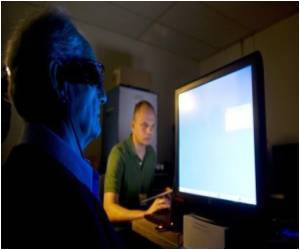Researchers at UC Santa Barbar are making their contribution towards the basic biological understanding of how retinas develop.

"These studies individually demonstrate the genetic determinants of nerve cell number," said Benjamin E. Reese, senior author and professor with the Neuroscience Research Institute and the Department of Psychological and Brain Sciences. "Together, they show that different nerve cell types are modulated independent of one another."
Using recombinant inbred mice, Irene Whitney, graduate student and first author of both articles, and Mary Raven, staff scientist and co-author, have been able to identify genomic loci where polymorphic genes must contribute to such natural variation. In the IOVS article, they describe this natural variation for the population of cone photoreceptors, and identify two potential causal genes that may modulate cone photoreceptor production on chromosome 10.
In the PNAS article, the scientists working will colleagues from four other U.S. institutions identify a promising candidate gene at a locus on chromosome 13, a transcription factor gene called Islet-1. This gene was confirmed to be critical for regulating horizontal cell number in genetically modified mice, in which the Islet-1 gene was rendered nonfunctional. The scientists verified that expression of this gene differs between these strains of mice during the developmental period when horizontal cells are produced. They also showed that the source of this variable expression must be due to a genetic variant within a regulatory region of the gene itself. Finally, they identified such a single nucleotide polymorphism creating an E-box, a DNA sequence bound by a family of transcription factors that have recently been shown to play a role in retinal development.
Source-Eurekalert









